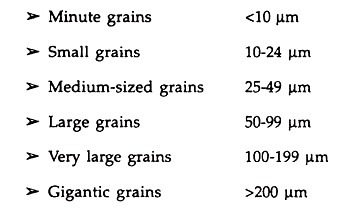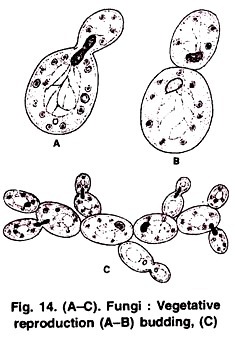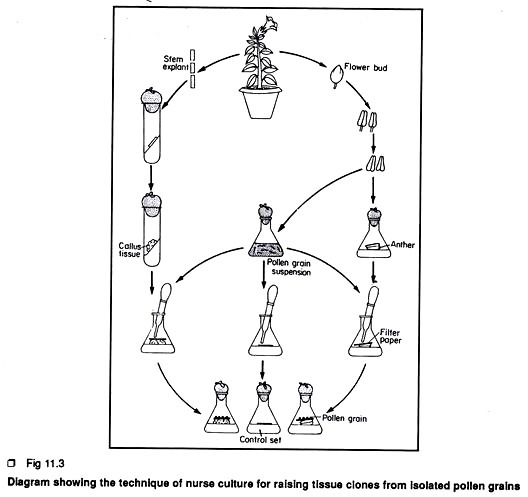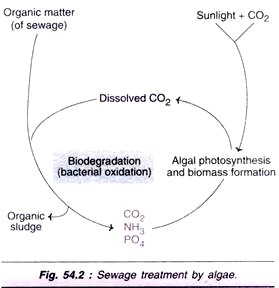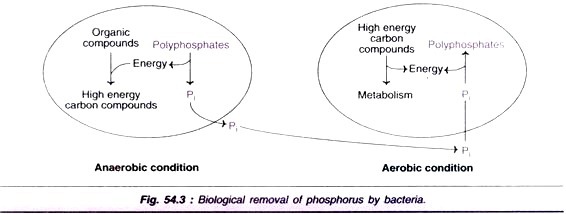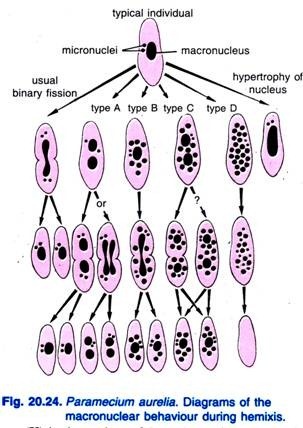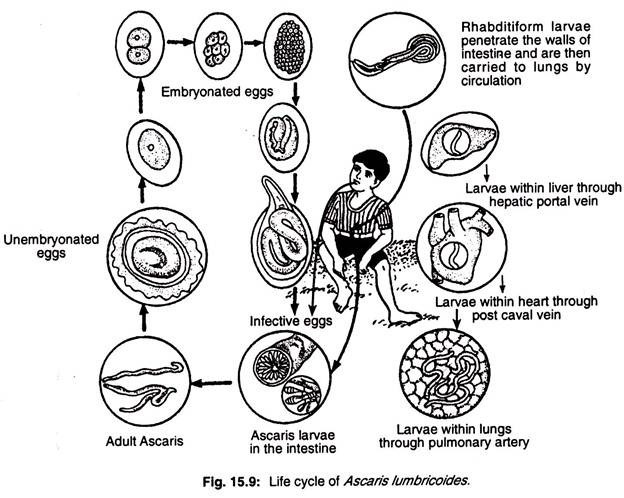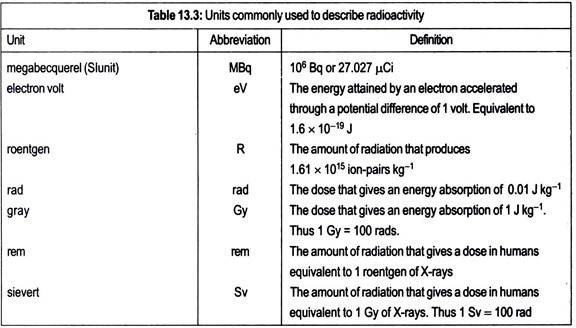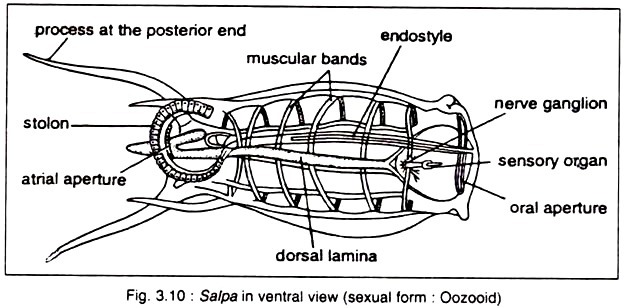Let us make an in-depth study of the enzymes. After reading this article you will learn about: 1. Meaning of Enzymes 2. Classification of Enzymes 3. Mechanism of Enzyme Action 4. Factors Affecting Enzyme Action 5. Enzyme Specificity 6. Enzyme Inhibition and 7. Diagnostic Importance of Enzymes.
Contents
Meaning of Enzymes:
Enzymes are proteinaceous (and even nucleic acids) biocatalyst which alter (generally enhance) the rate of a reaction.
Free energy of activation and effect of catalysis:
A chemical reaction like substrate to product, will take place when a certain number of substrate molecules at any instant, possess enough energy to attain an activated condition called the “transition state” in which the probability of making or breaking a chemical bond to form the product is very high. “Free energy of activation” is the amount of energy required to bring all the molecules in one gram mole of a substrate at a given temperature to the transition state.
In presence of a catalyst, the substrate combines with it to produce a transient state having a lower energy of activation than that of the substrate alone. This accelerates the reaction. Once the product is formed, the enzyme (catalyst) is free to combine with another molecule of the substrate and repeat the process. Though there is a change in the free energy of activation in presence of an enzyme, the overall free energy change of the reaction remains the same whether the reaction is catalysed by an enzyme or not.
Classification of Enzymes:
Classification of enzymes are based upon:
(1) The reaction catalysed,
(2) The presence or absence at a given time,
(3) The regulation of action,
(4) The place of action and
(5) Their clinical importance.
1. Classification Based upon the Reaction Catalysed:
Enzymes are broadly divided into six groups based on the type of reaction catalysed.
They are:
(1) Oxidoreductases
(2) Transferases
(3) Hydrolases
(4) Lyases
(5) Isomerases and
(6) Ligases.
(a) Oxidoreductases:
Enzymes which bring about oxidation and reduction reactions.
Ex. Pyruvate + NADH—lactate dehydrogenase → Lactate + NAD +
Glutamic acid + NAD—glutamate dehydrogenase → α-ketoglutarate + NH3 + NADH
(b) Transferases:
Enzymes which catalyze transfer of groups from one substrate to another, other than hydrogen. Ex. Transaminase catalyses transfer of amino group from amino acid to a keto acid to form a new keto acid and a new amino acid.
Ex. (α-Ketoglutarate + Alanine—alanine aminotransferase → Glutamate + Pyruvate
Aspartate + α-Ketoglutarate —aspartate aminotransferase Oxaloacetate + Glutamate
(c) Hydrolases:
Those enzymes which catalyse the breakage of bonds with addition of water (hydrolysis). All the digestive enzymes are hydrolases. Ex. Pepsin, trypsin, amylase, maltase.
(d) Lyases:
Those enzymes which catalyse the breakage of a compound into two substances by mechanism other than addition of water. The resulting product always has a double bond.
Ex. Fructose-1-6-diphosphate—ALDOLASE → Glyceraldehyde-3-phosphate + DHAP
(e) Isomerases:
Those enzymes which catalyse the inter-conversion of optical and geometric isomers.
Ex. Glyceraldehyde-3-phosphate—ISOMERASE → Dihydroxyacetone phosphate
(f) Ligases:
These enzymes catalyse union of two compounds. This is always an energy requiring process (active process).
Ex. Pyruvate + CO2 + ATP—pyruvate carboxylase Oxaloacetate + ADP + Pi
2. Classification Based upon the Presence or Absence at a Given Time:
Two types are identified:
(a) Inducible enzymes:
Those enzymes that are synthesized by the cell whenever they are required. Synthesis of these enzymes usually requires an inducer.
Ex. Invertase, HMG-CoA reductase, p-galactosidase and enzymes involved in urea cycle.
(b) Constitutive enzymes:
Enzymes which are constantly present in normal amounts in the body, irrespective of inducers.
Ex. Enzymes of glycolysis.
3. Classification Based upon the Regulation of Enzyme Action:
They are of two types:
(a) Regulatory enzymes:
The action of these enzymes is regulated depending upon the status of the cell. The action of regulatory enzymes is either increased or decreased by a modulator at a site other than the active site called the “allosteric site”.
Ex. Phosphofructokinase (PFK) and glutamate dehydrogenase.
(b) Non-regulatory enzymes:
The action of these enzymes is not regulated.
Ex. Succinate dehydrogenase.
4. Classification Based upon the Place of Action:
Depending upon the two sites of action, they are divided into—
(a) Intracellular enzymes:
Enzymes that are produced by the cell and act inside the same cell are known as intracellular enzymes.
Ex. All the enzymes of glycolysis and TCA cycle.
(b) Extracellular enzymes:
Enzymes produced by a cell but act outside that cell independent of it. Ex, All the digestive enzymes viz. trypsin, pancreatic lipase etc.
5. Classification Based upon their Clinical Importance:
(a) Functional plasma enzymes:
Enzymes present in the plasma in considerably high concentration and are functional in the plasma due to the presence of their substrate it plasma.
Ex. Serum lipase, blood clotting enzymes.
(b) Non-functional plasma enzymes:
Enzymes present in the plasma in negligible concentration and have no function in the plasma due to the absence of their substrate in it. Non-functional plasma enzymes are of diagnostic importance.
Enzymes are named in 4 digits by the enzyme nomenclature commission, wherein the;
1st digit refers to main classification
2nd digit refers to sub-classification
3rd digit refers to sub-sub classification
4th digit refers to that particular enzyme
Ex. 2.7.3.2 is adenosine triphosphate-creatine phosphotransferase (creatine kinase).
Mechanism of Enzyme Action:
An enzyme (or protein) should be in its native conformation to be biologically active. The three dimensional conformation of enzymes have a particular site where the substrate binds and is acted upon, this site is called the active site.
The active site is earmarked into two specific areas:
(1) Binding site—where the substrate binds and
(2) Catalytic site—where the enzyme catalysis takes place.
The amino acids present at the active site are tyrosine, histidine, cysteine, glutamic acid, aspartic acid, lysine and serine. In aldolase, lysine is present at the active site. In carboxypeptidase, two tyrosine residues are present at the active site. Ribonuclease has two histidines at the active site. Michaelis and Menten established the theory of combination of enzyme with substrate to form the enzyme-substrate complex. According to this, the enzyme combines with the substrate on which it acts to form an enzyme-substrate complex. Then, this enzyme is liberated and the substrate is broken down into the product of the reaction.
E [Enzyme] + S [Substrate] → ES [Enzyme-Substrate complex] → E + Product
The ES complex is also called as ‘Michaelis Menten complex’.
Enzymes accelerate the rate of chemical reaction by four major mechanisms viz.
1. Proximity and Orientation:
The enzyme binds to the substrate in such a way that the susceptible bond is in close proximity to the catalytic group and also precisely oriented to it resulting in the catalysis.
2. Strain and Distortion or Induced Fit Model:
Binding of the substrate induces a conformational change in the enzyme molecule which strains the shape of the active site and also distorts the bounded substrate, thus bringing about the catalysis. The binding of the substrate to the enzyme will bring about a change in the tertiary or quaternary structure of enzyme molecule, which destabilizes the enzyme. In order to attain stability, the enzyme distorts the substrate thereby forming the reaction product.
3. General Acid-Base Catalysis:
The active site of the enzyme has amino acids that are good proton donors or proton acceptors, this result in acid-base catalysis of the substrate.
4. Covalent Catalysis:
Some enzymes react with their substrates to form very unstable, covalently joined enzyme-substrate complexes, which undergo further reaction to form the products.
Factors Affecting Enzyme Action:
The factors influencing the rate of the enzyme catalysed reaction are:
1. Temperature
2. pH
3. Substrate concentration
4. Enzyme concentration
5. Concentration of products
6. Light
7. Ions
1. Effect of Temperature:
When all the other parameters are kept constant (i.e. at their optimum level), then the rate of enzyme reaction increases slowly with increase of temperature till it reaches a maximum. Further increase in temperature denatures the protein resulting in decrease in the enzyme action and a further increase in temperature may totally destroy the protein.
Optimum temperature:
The temperature, at which the enzyme activity is maximum, is termed as the optimum temperature. Most of the enzymes are totally inactive at 0° C to 4° C, their activity starts at 10° C and slowly increases reaching its maximum capacity at its optimum temperature. Majority of the enzymes in the human body have their optimum temperatures between 37° C and 40° C.
Beyond this temperature the enzymes become less active and may loose their activity completely at higher temperatures. In fever, rise in temperature increases the metabolic activity due to increase in enzymatic action. Decrease in the temperature leads to hypothermia which is seen in organ transplantation and open heart surgery.
However, life exists in very cold regions and also in hot springs, indicating that the same enzyme that exists in human cell, for instance the enzymes of glycolysis and TCA cycle have their optimum temperatures at extremes of temperatures.
Thus refrigeration bacteria exists with the optimum temperature of its enzymes being near 4°C. Likewise bacteria surviving in hot springs have the enzymes with their optimum temperatures nearing hundred(s) degree Celsius ex. the optimum temperature of Taq polymerase is 72°C.
Vant Hoffs coefficient:
It is the coefficient which explains that for every 10°C rise in temperature the enzyme activity increases 2 fold till the optimum temperature is reached.
2. Effect of pH:
When all the other parameters are kept constant, the velocity of an enzyme catalysed reaction increases till it reaches the optimum pH and then decreases with further increase/decrease in pH. The activity is maximum for most of the enzymes at the biological pH of 7.4. Optimum pH for pepsin is 1.5, acid phosphatase is 4.5 and for alkaline phosphatase it is 9.8.
3. Effect of Substrate Concentration:
When all the other parameters are kept constant including the enzyme concentration, then, as the substrate concentration increases the rate of reaction increases steadily, till the enzyme is saturated with the substrate. At this stage the reaction rate does not increase and remains constant. When a graph is plotted with velocity versus substrate concentration it gives a hyperbolic curve.
This is because, as the concentration of substrate is increased, the substrate molecules combine with all available enzyme molecules at their active sites till no more active sites are available. Thus at this stage, substrate only replenishes the sites when the products are liberated and cannot increase the rate of reaction.
Definition:
Km is defined as the substrate concentration at which the velocity of the enzyme catalysed reaction is half the maximum velocity.
i. A high Km value indicates weak binding between the enzyme and the substrate.
ii. Low Km indicates strong binding.
Limitations of Michaelis-Menten equation:
i. This equation enables the calculation of approximate value of the maximum velocity and not the accurate value.
ii. It holds good for enzymes which have active site only and not the allosteric site.
iii. It calculates the Km for mono-substrate reactions and not for multi-substrate reactions.
iv. It is used to know the velocity of non-regulatory enzymes but not of regulatory enzymes.
In order to overcome the above limitations a Line weaver-Burke plot is drawn so as to establish a relation between the reciprocals of substrate concentration and velocity.
Line weaver-Burke plot:
Inverting the Michaelis-Menten equation, we get
By this equation we can calculate accurately:
i. The velocity of any enzyme catalysed reaction.
ii. The rate of reaction where more than one substrate is present.
iii. The velocity of all the enzymes.
Regulatory enzymes give a sigmoid curve and non-regulatory enzymes give a hyperbolic curve.
4. Effect of Enzyme Concentration:
As the enzyme concentration increases, the rate of reaction increases steadily in presence of an excess amount of substrate, the other factors being kept constant. A linear curve is produced.
5. Effect of Products:
When the product is more in the reaction mixture, then the rate of reaction decreases due to feedback inhibition.
6. Effect of Light:
The speed of activity of various enzymes changes in different wavelength of light ex. blue light enhances the activity of salivary amylase whereas, U.V. light decreases the velocity.
7. Effect of Ions:
Presence or absence of particular ions enhances or reduces the activity of enzymes ex. Pepsinogen is converted to pepsin in presence of H+ ions. Kinases act in presence of Mg+2 ions.
Enzyme Specificity:
Enzymes are very specific in their reaction. They either act on one particular substrate or catalyse one particular reaction.
Accordingly enzyme specificity is of two types:
1. Reaction Specificity:
These enzymes are specific for the type of reaction they catalyse, irrespective of the substrate on which they act. Thus different enzymes bring about different reactions on the same substrate i.e. enzymes are specific for one particular reaction no matter which substrate it may be ex. amino acids are acted upon both by amino acid oxidase which oxidizes the amino acids to keto acids and decarboxylase that removes carbon dioxide from them.
2. Substrate Specificity:
These enzymes are specific for the substrate upon which they act. This is further classified as follows.
(a) Absolute specificity:
These enzymes are highly specific and act on one particular substrate only and no other substrate. Ex. Urease, catalase, aspartase.
(b) Relative specificity:
These enzymes act on one particular bond. Ex. D-amino acid oxidase.
(c) Group specificity:
These enzymes act on only one particular group.
i. Pepsin:
Is a proteolytic enzyme that acts on peptide bonds contributed by aromatic amino acids like tyrosine, tryptophan and phenylalanine.
ii. Trypsin:
Is specific for basic amino acids. Hence it cleaves peptide bonds contributed by lysine and arginine.
iii. Amino peptidase:
Acts on peptide bond near the free amino end.
iv. Carboxypeptidase:
Specific for free carboxylic group.
v. Amylase:
Specific for α-1 → 4 glycosidic linkages.
(d) Stereo specificity:
These enzymes act on one particular stereo isomer.
i. Succinate dehydrogenase:
Is specific for the stereo isomer fumarate i.e. cis form of double bond.
ii. Cellidase:
Is specific for β glycosidic linkage.
iii. L-amino acid oxidases:
Act on L-amino acids only and not on D-amino acids.
Coenzymes:
They are non-protein, heat stable, low molecular weight dialyzable organic compounds that are required for the action of enzymes. Generally vitamins act as coenzymes ex. biotin, pyridoxine etc. Enzyme along with a co-enzyme is known as ‘holoenzyme’ and that without a co-enzyme is an ‘apoenzyme’. Apoenzyme (protein) + Co-enzyme (non-protein) → Holoenzyme (active enzyme protein).
Holoenzyme may contain an organic or inorganic compound (metal ions) or both. If organic substances are present with enzymes then they are known as ‘co-enzymes’ and if inorganic substances are acting with the enzymes then they are called as ‘co-factors’ (Mg, Mn, Zn, Co, Se, etc.).
The role of co-enzymes is:
(i) They act as co-substrate or second substrate ex. Pyruvate + NADH → Lactate + NAD+. NADH acts as a coenzyme or second substrate,
(ii) They help in transferring of groups either hydrogen or groups other than hydrogen, and
(iii) Specific activity of a co-enzyme is the number of units of co-enzyme present in one milligram of enzyme protein.
Enzyme unit or activity:
One unit of enzyme activity is the amount of enzyme that converts 1.0 (J.M of the substrate per minute into the products at 25°C.
Specific activity of an enzyme:
It is defined as the number of enzyme units per milligram of the protein.
Enzyme turnover number:
The number of substrate molecules transformed per minute (unit time) by a single enzyme is known as enzyme turnover number. Carbonic anhydrase has the highest turnover number of 36,000,000.
First and second order reaction:
A reaction in which there is only one substrate is termed as 1st order reaction. A reaction in which two substrates are involved to form a product is termed as 2nd order reaction, also known as bi-substrate reaction. This involves either single displacement (i.e. both substrates binding to two active sites in the enzyme at the same time) or double displacement (ping-pong displacement, wherein only one substrate binds to the enzyme active site at a given time, once this is released the other substrate binds).
Zymogen:
The inactive form of an enzyme is known as zymogen or pro-enzyme. Pepsinogen and trypsinogen are the zymogens of pepsin and trypsin respectively.
Ribozyme:
Ribonucleic acids that catalyse a reaction similar to that of enzymes are known as ribozymes. These ribozymes help in the processing of the newly transcribed RNA ex. small nuclear RNA (SnRNA) and hetero-nuclear RNA (hnRNA).
Enzyme Inhibition:
Alteration in the enzyme activity by specific substances other than non-specific substances like pH, temperature etc. is called enzyme inhibition.
There are two types of enzyme inhibitions:
(a) Irreversible and
(b) reversible.
1. Irreversible Enzyme Inhibition:
The activity of the enzyme is inhibited by covalent binding of the inhibitor at the active site. The enzyme inhibitor bond cannot be dissociated, so it is permanent and irreversible i.e. it cannot be reversed.
i. Aldolase is inhibited permanently by iodoacetate.
ii. Di-isopropylflurophosphate (DFP), a component of nerve gas, inhibits most of the digestive enzymes permanently in human beings. Hence it is very poisonous.
iii. Para chloromercuric benzoate (PCMB) inhibits the enzymes hexokinase and urease irreversibly.
iv. Organic reagents like alkaloid reagents inhibit enzymes irreversibly.
2. Reversible Enzyme Inhibition:
The inhibitors bind reversibly to the enzyme and so it is not permanent. The inhibition can be reversed by various mechanisms.
(a) Competitive enzyme inhibition:
It is a type of reversible inhibition in which there is competition between substrate and inhibitor for the active site of an enzyme because of the structural similarity. All non-regulatory enzymes show competitive inhibition. Clinically competitive enzyme inhibition is of great importance since most of the drugs act by competitive inhibition.
(i) The enzyme succinate dehydrogenase’s (SDH) substrate is succinic acid and the competitive inhibitors are oxalic acid, mallonic acid and glutaric acid. Among these, mallonic acid is the most potent competitive inhibitor of SDH.
(ii) Folic acid, a vitamin for human beings has para-amino benzoic acid (PABA) as one of its components. Whereas it is not a vitamin for microorganisms i.e., they cannot utilize preformed folic acid from external source, instead they synthesize their own folic acid from aba. Sulpha drugs contain para-amino sulphonate which is structurally similar to PABA and hence competes for the enzyme active site of folic acid synthesis in microorganisms. If excess dose of sulpha drug is given, it results in inhibition of folic acid synthesis thus acting as an antibiotic. Human beings are not affected, because they do not synthesize folic acid.
(iii) Methanol is acted upon by the enzyme alcohol dehydrogenase forming formaldehyde which is highly poisonous. If ethanol if given to methanol intoxicated patients then ethanol competitively binds to alcohol dehydrogenase thereby preventing formation of formaldehyde.
(iv) Allopurinol is the competitive inhibitor of the enzyme xanthine oxidase whose substrate is hypoxanthine. Allopurinol prevents the formation of uric acid by competitive inhibition because it has structural similarity to hypoxanthine. This principle is used in the treatment of gout i.e. abnormal accumulation of uric acid crystals in the joint causing inflammation.
(v) Glaucoma is a condition in which there is accumulation of fluid in the lens resulting in enlargement of eye. This can be treated with ‘acetazolamide’ which inhibits the enzyme carbonic anhydrase competitively. This prevents water formation and subsequent release of more water through the urine.
(b) Non-competitive enzyme inhibition:
It is shown by regulatory enzymes, also called allosteric enzymes.
Allosteric enzymes:
These are the enzymes that contain a site other than the active site which is called ‘allosteric site’. The action of some enzymes is regulated by ‘effectors’ which can bind reversibly to the enzyme molecule at specific sites other than the substrate binding site called the modulator site or the allosteric site.
There is no competition between substrate and inhibitor for the active site since the inhibitor or modulator binds at the modulator site or allosteric site. If the binding of the effector causes inhibition of the enzyme action then it is called a negative effector and the process is called ‘allosteric inhibition’.
If the enzyme reaction is activated by a modulator then it is called a positive modulator or effector and the process is called ‘allosteric activation’.
Ex. Phosphofructo kinase (PFK) is an allosteric enzyme of the glycolytic pathway.
The positive modulators of this enzyme are AMP and ADP.
The negative modulators of PFK are ATP and citrate.
Antienzymes:
These are substances (generally proteinacious in nature) that inhibit most of the digestive enzymes, ex. certain roundworms and hookworms survive in the intestine by secreting anti enzymes. Uncooked rice contains certain proteins that act as anti enzymes.
Reversible covalent modification:
Enzyme activity can be regulated by reversible covalent modification.
It is regulated by cyclic inter-conversion of enzyme into two forms:
(i) Modified form and
(ii) Unmodified form.
The inter-conversion is brought about by a ‘converting enzyme’. The process of activation and inactivation of the enzyme is generally brought about by covalent phosphorylation or de-phosphorylation of the target enzyme. For example hormones like epinephrine, glucagon etc. bind to the hormone receptor site on the cell membrane and activate the enzyme adenyl cyclase, which in turn converts ATP to cyclic AMP (cAMP). This cAMP converts inactive protein kinase to active protein kinase (‘a’ form). This protein kinase phosphorylates many enzymes in the cell, some of which become active and yet some others become inactive.
The inactive phosphorylase (‘b’ form) gets converted to active phosphorylase (‘a’ form) upon phosphorylation and affects the breakdown of glycogen to glucose. On the other hand glycogen synthase becomes inactive upon phosphorylation thereby inhibiting the formation of glycogen.
Diagnostic Importance of Enzymes:
Enzymes were classified into two groups based upon their clinical importance as ‘functional plasma enzymes’ i.e., those enzymes present in the plasma in considerably high amounts and are functional in the plasma due to the presence of their substrate in it.
Ex. serum lipase, blood clotting enzymes, and ‘non-functional plasma enzymes’ i.e., those enzymes that are present in the plasma in negligible amounts and have no function in the plasma due to the absence of their substrate in it. Non-functional plasma enzymes are of diagnostic importance.
The non-functional plasma enzymes are present in higher concentration in tissues and very low concentration in the plasma i.e. in trace amounts, but their concentration in plasma increases immediately following tissue injury or destruction.
If there is tissue damage leading to cell rupture then the enzymes present in that tissue leaks into the blood leading to the increase in the concentration of these enzymes in the plasma. Increase in the level of non-functional plasma enzymes in the blood, indicates the disorder to the tissue where they exist. Different enzymes exist in different tissues in varying levels. Damage to a specific tissue releases a particular enzyme. Therefore estimation of enzymes in the plasma has a diagnostic importance.
The non-functional plasma enzymes include lactate dehydrogenase (LDH), creatine phosphokinase (CPK), alanine amino transferase (ALT) or serum glutamate pyruvate transaminase (SGPT), aspartate transaminase (AST) or serum glutamate oxaloacetate transaminase (SGOT), sorbitol dehydrogenase, alkaline phosphatase, acid phosphatase, amylase, pancreatic lipase etc.
However functional plasma enzymes are already in higher concentration in the plasma, hence their decrease in the concentration in the plasma indicates malfunction of the organ where they are synthesized ex. blood clotting enzymes are synthesized in the liver; hence decrease in their concentration indicates liver dysfunction.
Anyway an immediate assessment of the liver function cannot be made by this assessment because by the time the enzyme concentration in the plasma decreases (may take 4 to 5 days), the liver must have regained its normal vitality.
Diagnosis of Myocardial Infarction using Enzyme Assay:
There are three main enzymes that are used in the diagnosis of myocardial infarction (1) Lactate dehydrogenase (LDH) (2) Creatine phosphokinase (CPK)—marker enzyme and (3) Transaminase (AST or SGOT).
(1) Lactate dehydrogenase (LDH):
LDH catalyses the inter conversion of pyruvate to lactate, a very important reaction of anaerobic glycolysis. Glycolysis occurs in each and every cell, in some cells it is always anaerobic (RBC) whereas in others it is aerobic sometimes and anaerobic at some other time (muscle tissue, liver, kidney etc.).
In other words LDH is present in each and every cell of the body. Therefore damage to any of the tissues of the body results in release of LDH into the plasma. Hence it becomes a difficult task to trace out the organ from which it has leaked.
However LDH exists in five isoenzyme forms i.e. multiple forms of the same enzyme (These enzymes bring about the same reaction but exhibit different physical characters like molecular weight, charge, electrophoretic mobility, Km and isoelectric pH). The polypeptides in LDH are designated as ‘H chain’ and ‘M chain’.
All the isoenzyme forms of LDH are tetramer i.e. has four polypeptides in the following combinations:
(a) H4 or LDH1—Heart
(b) H3M or LDH2—RBC
(c) H2M2 or LDH3—Brain and lungs
(d) HM3 or LDH4—Kidney
(e) M4 or LDH5—Liver and skeletal muscle
All these isomers have been successfully separated on Sodium Dodecyl Sulphate Polyacryl Amide Gel Electrophoresis (SDS-PAGE) and their banding pattern from the plasma is established as under—
LDH1 or H4 is predominantly present in the cardiac muscle, whereas the isoenzyme form LDH5 or M4 is more abundant in the skeletal muscle. These two enzymes have different Km values and Km is indirectly proportional to affinity (Km a 1/affinity).
The skeletal muscle enzyme M4 has low Km value for pyruvate and hence greater affinity for pyruvate resulting in high rate of conversion of pyruvate to lactate. The cardiac isoenzyme LDH1 or H4 has high Km value for pyruvate hence lesser affinity for pyruvate, therefore low rate of conversion of pyruvate to lactate. Thus the concentration of H4 or LDH1 isoenzyme form of lactate dehydrogenase increases in the plasma during myocardial infarction. The peak levels of LDH are maintained in the plasma for 6 days following the attack, after which it starts receding in its concentration.
(2) Creatine phosphokinase (CPK):
This is known as the marker enzyme for the diagnosis of myocardial infarction or heart attack, because this is the first enzyme to increase within a short time in the blood plasma following a heart attack. CPK is an enzyme that catalyses the conversion of creatine to creatine phosphate, a high energy compound that works to supply energy during muscle contraction. Therefore this enzyme is present only in a few tissues like the cardiac muscle, skeletal muscle and the brain.
CPK also exists in various isoenzyme forms. It has two polypeptides ‘B’ & ‘M’ that form dimers in the following combinations to give rise to three isoenzymes of CPK.
MB — Predominant in cardiac muscle
BB — Predominant in brain
MM — Predominant in skeletal muscle
Thus estimation of the isoenzyme MB is indicative of heart attack. CPK maintains a higher concentration in the plasma for 1-2 days. The concentration of CPK after the first attack is 10 times more than the normal and if another attack occurs within a day or two the concentration further increases to 100 fold and a third attack within a short span of time raises the level of CPK to 300 fold which is lethal concentration.
(3) Transaminases:
Among the two transaminases, aspartyl transaminase (AST or SGOT) increases in the plasma following an attack and the higher levels are seen in 4 to 5 days following an attack.
